- Home
- H. G. Wells
The War of the Worlds (Penguin Classics) Page 22
The War of the Worlds (Penguin Classics) Read online
Page 22
The broadening of men’s views that has resulted can scarcely be exaggerated. Before the cylinder fell there was a general persuasion that through all the deep of space no life existed beyond the petty surface of our minute sphere. Now we see further. If the Martians can reach Venus, there is no reason to suppose that the thing is impossible for men, and when the slow cooling of the sun makes this earth uninhabitable, as at last it must do, it may be that the thread of life that has begun here will have streamed out and caught our sister planet within its toils.
Dim and wonderful is the vision I have conjured up in my mind of life spreading slowly from this little seed-bed of the solar system throughout the inanimate vastness of sidereal space. But that is a remote dream. It may be, on the other hand, that the destruction of the Martians is only a reprieve. To them, and not to us, perhaps, is the future ordained.
I must confess the stress and danger of the time have left an abiding sense of doubt and insecurity in my mind. I sit in my study writing by lamplight, and suddenly I see again the healing valley below set with writhing flames, and feel the house behind and about me empty and desolate. I go out into the Byfleet Road, and vehicles pass me, a butcher-boy in a cart, a cabful of visitors, a workman on a bicycle, children going to school, and suddenly they become vague and unreal, and I hurry again with the artilleryman through the hot, brooding silence. Of a night I see the black powder darkening the silent streets, and the contorted bodies shrouded in that layer; they rise upon me tattered and dog-bitten. They gibber and grow fiercer, paler, uglier, mad distortions of humanity at last, and I wake, cold and wretched, in the darkness of the night.
I go to London and see the busy multitudes in Fleet Street and the Strand, and it comes across my mind that they are but the ghosts of the past, haunting the streets that I have seen silent and wretched, going to and fro, phantasms in a dead city, the mockery of life in a galvanized body. And strange, too, it is to stand on Primrose Hill, as I did but a day before writing this last chapter, to see the great province of houses, dim and blue through the haze of the smoke and mist, vanishing at last into the vague lower sky, to see the people walking to and fro among the flower-beds on the hill, to see the sightseers about the Martian machine that stands there still, to hear the tumult of playing children, and to recall the time when I saw it all bright and clear-cut, hard and silent, under the dawn of that last great day . . .
And strangest of all is it to hold my wife’s hand again, and to think that I have counted her, and that she has counted me, among the dead.
Appendix
NOTE ON PLACES IN THE NOVEL
Places in the text are only annotated to explain a particular geographical reference, i.e. the ‘Shepperton Bank’ as the north bank of the Thames, or a historical event which may have had reference to Wells’s theme of disruption and invasion. However, it is important to note that the events of The War of the Worlds take place in a particular location (largely the suburbs of London, particularly the town of Woking, Surrey, where Wells was living when he wrote the novel and London itself), and the effect of the story for many of its readers was in the familiarity of its landscape. Only very particular details such as the names of certain public houses or other buildings are fictionalized. The story begins around Woking, about four miles north of Guildford and twenty-three miles south-west of London. The narrator lives in Maybury, the eastern part of Woking, as did Wells during the writing of The War of the Worlds. In Experiment in Autobiography, Wells says that he ‘wheeled about the district marking down suitable places and people for destruction by my Martians’ (vol. 2, p. 543). There is now a statue of a Martian tripod in Woking town centre.
The (fictional) astronomer Ogilvy lives in Ottershaw, about three miles from Maybury. Woking is also sixteen miles north-west of Dorking, the location of George Chesney’s The Battle of Dorking (1871) which sparked off a tradition of ‘future-war’ and invasion stories in which the flesh of the reading public was made to creep by the destruction of well-known places. The War of the Worlds can be seen as the culmination and transcendence of this tradition.
The first Martian landing is on Horsell Common, north of Woking, the second on the golf links between Woking and Byfleet, three miles to the north-east. After removing his wife to Leatherhead, east and south of Woking, the narrator returns to be ‘in at the death’ and is caught up in the advance of the Martians north through the village of Cobham and is cut off from returning to Leatherhead by the third cylinder, landing in the region of Pyrford, a village between Woking and Leatherhead. He flees with the artilleryman north-east to Weybridge and witnesses the destruction of that village and of Shepperton on the north bank of the Thames, escaping down-river to land on the north bank opposite Walton-on-Thames. There he meets the curate, and they set off northward to Halliford. The Martians prepare for their advance, and take up a position from St George’s Hill, five miles north-north-east of Woking station, to the village of Send, with the central part of the line at Weybridge, pointing to the heart of London. The narrator’s brother in London, hearing of the Martian advance from the south-west, witnesses chaos and fugitives in the iconic parts of central London: the Strand (location of fashionable shops and theatres), Trafalgar Square (monuments of Empire such as Nelson’s Column) and Westminster (the Houses of Parliament). The Londoners flee north, via Edgware and Barnet, east towards Southend and Shoeburyness on the Essex coast, and south to Deal and Broadstairs. After witnessing the sixth cylinder land at Wimbledon, the narrator’s brother with two companions heads off in the direction of Colchester, seventy miles north-east of London, beyond which ports to the Continent are accessible. One of them sees the seventh cylinder, which lands on Primrose Hill, north of Regent’s Park in London. They reach Chelmsford and eventually Tillingham, sixty-five miles north-east of London and within sight of the sea. There they embark on a paddle-steamer and witness the duel between the Thunder Child and the Martian tripod.
The narrator holes up in Halliford with the curate. Then they travel via Sunbury, Bushey Park, where the fourth cylinder landed, Twickenham, and cross Richmond Bridge, where the Thames is flowing north, in the direction of Kew and the Royal Botanical gardens. Despite the narrator’s desire to find his wife in Leatherhead, they are still travelling north and then east, but are now south of the Thames. In Sheen, in the direction of Mortlake (then a small village on the bank of the Thames north of East Sheen) they take shelter in a house where the fifth cylinder lands, trapping them. Following the death of the curate, the narrator remains in hiding and on his emergence sets off westwards towards Kew, but is prevented by a swamp of ‘red weed’ from going further and retraces his steps to Mortlake, Roehampton and Putney Common, north of Wimbledon, where the sixth cylinder landed. On Putney Hill he meets again the artilleryman. After his disillusion with the artilleryman’s survivalist project he crosses the bridge to Fulham and Brompton, witnessing the devastation of fashionable London as he journeys through South Kensington, Hyde Park, Oxford Street, Baker Street, Regent’s Park, St John’s Wood to Primrose Hill, north of Regent’s Park, from where much of London to the Thames and beyond could be seen. It is here he sees the dead Martian (from the seventh cylinder, which landed on Primrose Hill) and observes the catastrophe brought to London, including the damage done to St Paul’s Cathedral.
Andy Sawyer
Notes
EPIGRAPH
1.Kepler (quoted in ‘The Anatomy of Melancholy.’): The astronomer Johannes Kepler (1571–1630) devised laws of planetary motion which remain fundamental to modern astronomy. His Somnium (‘Dream’), published 1634, speculated about life on other worlds. Robert Burton (1577–1640) quotes Kepler in The Anatomy of Melancholy (1621) in the context of this question.
BOOK I
CHAPTER 1
THE EVE OF THE WAR
1.watched: In Wells’s stories ‘The Star’ and ‘The Crystal Egg’ (both 1897) Martians also observe the Earth.
2.infusoria: Microscopic organisms.
3
.the older worlds of space: According to the then prevailing theory of planetary formation, the outer planets formed first. Mars, being further from the sun and smaller, would have cooled and aged faster than the Earth.
4.the beasts that perish: Psalm 49:12. (All Biblical references are taken from the Authorized Version.)
5.Mars: Named after the Roman god of war, it is the fourth planet from the sun. Known as the ‘red planet’ from its appearance, it was the setting for fictional civilizations at least as early as Percy Greg’s Across the Zodiac (1880) and still remains one of the most resonant locations in science fiction.
6.I scarcely need remind the reader: Viewpoint in this chapter shifts from the impersonal author to a recognizable character who, like Wells, is a writer with scientific interests producing articles on ‘the probable developments of moral ideas’ and who lives with his wife in Woking. While there are Wellsian aspects to this character, particularly in his reaction to religion and ideas about future societies, he is not necessarily a reliable narrator. The historical H. G. Wells may be tangentially referred to in this story (see notes for Book II, Ch. 2, ‘What We Saw from the Ruined House’).
7.nebular hypothesis: Immanuel Kant (1724–1804) and Pierre-Simon Laplace (1749–1827) suggested that the planets condensed from rings of gas thrown off by the sun.
8.inhabitants of Mars: Camille Flammarion (1842–1925) in L’Astronomie populaire (1879) and La Planète Mars (1892), and Percival Lowell (1855–1916) in Mars (1895) argued that Mars was inhabited by intelligent beings.
9.bison and the dodo: The bison or American buffalo was all but exterminated by hunters during the nineteenth century. The dodo, a flightless pigeon-like bird native to Mauritius, was driven to extinction by 1680.
10.Tasmanians: Tasmania became a British convict settlement in 1803. By 1876 the native inhabitants had been exterminated by murder, enslavement and disease. In The Outline of History (1920) Wells describes the Tasmanians as ‘palaeolithic’ and describes how poisoned meat was left out for them.
11.Schiaparelli: Giovanni Virginio Schiaparelli (1835–1910) observed, during the 1877 opposition (see note 12), ‘canali’ (channels). Lowell continued his mapping, and argued that they were very likely actual canals, built by Martians.
12.the opposition of 1894: Opposition is when the Earth is between the sun and Mars, and the two planets are at their closest. Conjunction is when the sun is directly between Mars and Earth.
13.Lick Observatory: Mount Hamilton, California. It was opened in 1888.
14.Perrotin of Nice: The Director of the observatory built in 1880 near Nice on the Mediterranean coast of France.
15.the issue of Nature dated August 2nd: On that date in 1894 Nature reported on a ‘A Strange Light on Mars’ observed by the astronomer Javelle. The report speculates, not altogether seriously, that the light could be signals from the Martian inhabitants. The fictional ‘Lavelle of Java’ is clearly an echo of the French astronomer.
16.Daily Telegraph: Founded in 1855, it was (and is) an important Conservative newspaper, in Wells’s time selling about 300,000 copies a day.
17.Ogilvy . . . at Ottershaw: Fictional, but an astronomer of that name features in Wells’s short story ‘The Star’ (1897). Wells mixes real and fictitious names in War of the Worlds. Only real names, or fictional versions of real people, are hereafter annotated. For Ottershaw, see p. 181, ‘Note on Places in the Novel’.
18.Punch: British weekly satirical magazine (founded 1841) noted especially for its cartoons. It was published until 1992, revived in 1996, and ceased publication in 2002.
19.learning to ride the bicycle: As Wells himself was doing during the composition of The War of the Worlds.
CHAPTER 2
THE FALLING STAR
1.Denning: William Frederick Denning (1848–1931), Britain’s leading authority on meteorites.
2.Daily Chronicle: Established 1877, the major pro-Liberal British newspaper.
CHAPTER 3
ON HORSELL COMMON
1.‘touch’: ‘Tag’, or ‘tig’: children’s game in which the person touched chases the other players until he or she touches one, who takes over the chase.
2.gas-float: A kind of beacon. The Oxford English Dictionary quotes the Daily News of 26 May 1897: ‘a species of beacon, shaped at the bottom like a ship, and carrying on a lofty pyramid the light, which is fed from a gas cylinder placed in the hull.’
3.three kingdoms: England, Scotland and Ireland. (Wales is a Principality.)
4.basket-chaise: A light horse-drawn carriage.
5.Astronomer Royal: A position dating from 1675, when Charles II appointed the first Director of the Royal Observatory, Greenwich. Wells’s ‘Stent’ is fictional: the actual Astronomer Royal during the dates covered by The War of the Worlds was William Christie (1845–1922).
CHAPTER 4
THE CYLINDER OPENS
1.a big greyish rounded bulk: Wells’s description of the Martians is based upon speculation about how life could evolve on a low-gravity, arid world like Mars, but also owes much to his essay ‘The Man of the Year Million’ (see note 5 for Book II, Ch. 2) in which he considers how humanity could evolve into a being in which the brain develops, the lower limbs atrophy and the digestive system loses the ability to cope with solid food.
2.Gorgon: In Greek mythology, the three Gorgons (Medusa, Stheno and Euryale) had writhing serpents for hair.
CHAPTER 5
THE HEAT-RAY
1.The Heat-Ray: The Oxford English Dictionary cites The War of the Worlds as the first use of this term to describe a futuristic weapon.
CHAPTER 7
HOW I REACHED HOME
1.electric lamps: A number of inventors worked on electric light in the late nineteenth century. London’s first public electric lighting using ‘carbon arc lamps’ was erected in 1878. Sir Joseph Wilson Swan (1828–1914) demonstrated electric lamps in Newcastle, England in 1879 and in the same year the American Thomas Alva Edison (1847–1931) produced a long-lasting light bulb. In 1882, Thomas Edison’s Electric Light Company opened a power station in London.
2.Times: Established 1788, Britain’s leading daily newspaper, and still published.
3.argon: Inert gas discovered in 1894 by Lord Rayleigh (1842–1919) and William Ramsey (1852–1916).
CHAPTER 8
FRIDAY NIGHT
1.Trenching on Smith’s monopoly: Infringing the right of the W. H. Smith company to sell newspapers and books on railway stations.
2.hussars: Light cavalry.
3.Maxims: An early machine-gun patented 1884 by Sir Hiram Stevens Maxim (1840–1916) and adopted by the British Army in 1889.
4.Cardigan regiment: Army regiment named for Cardiganshire, Wales, but in this instance based in Aldershot, a garrison town in Hampshire about ten miles from the events of the story.
CHAPTER 9
THE FIGHTING BEGINS
1.Horse Guards: One of the British Army’s elite regiments.
2.‘fishers of men’: Matthew 4:19: ‘And he saith unto them, Follow me and I shall make ye fishers of men.’
3.Oriental College: About half a mile east of Woking station. Formerly the Royal Dramatic College, the buildings were converted into a centre for distinguished visitors from India.
4.her cousins: other references make them the narrator’s cousins.
5.Spotted Dog: in reality the ‘Princess of Wales’, near Wakeford.
6.dogcart: a small open cart, originally with seats constructed and positioned so as to form a box for sportsmens’ dogs (Oxford English Dictionary).
7.‘my bit of a pig’: Either the landlord is selling an actual pig to the stranger and so he and the narrator are talking at cross-purposes, or he is using one of the several slang meanings of ‘pig’ as ‘property’.
CHAPTER 10
IN THE STORM
1.articulate ropes: Jointed steel cables.
2.College Arms: The real name of the public house.
CHAPTER 11
&nbs
p; AT THE WINDOW
1.Potteries: The ‘Five Towns’ after Arnold Bennett (1867–1931): the pottery-making region of Staffordshire, now making up the city of Stoke-on-Trent: Burslem, Fenton, Hanley, Longton, Stoke-upon-Trent and Tunstall. Although there are six towns, Bennett’s novel Anna of the Five Towns (1902) omitted Fenton. Wells spent three months in the area in 1888.
2.ironclad: Warship protected by thick plates of iron or steel. The term came into general use in the 1860s, during the American Civil War.
3.pillars of fire: Exodus 13:21, ‘And the Lord went before them by day in a pillar of a cloud, to lead them the way; and by night in a pillar of fire.’
CHAPTER 12
WHAT I SAW OF THE DESTRUCTION OF
WEYBRIDGE AND SHEPPERTON
1.theodolite: An instrument used in surveying for measuring angles.
2.heliograph: A signalling apparatus using a mirror to reflect sunlight.
3.‘ ’luminium’: Aluminium; first produced in 1825, but expensive to produce until electrolysis was perfected in 1886.
4.sabbatical: It was Sunday, so they were dressing for church.
5.Shepperton side: The north bank of the Thames, as is the ‘Middlesex Bank’ (Ch. 13). The ‘Surrey side’ is the south bank.
CHAPTER 13
HOW I FELL IN WITH THE CURATE
1.the earthquake that destroyed Lisbon: 1 November 1775, when 50,000 people died and the city was devastated.
2.‘Sodom and Gomorrah!’: Cities destroyed for their sinfulness as recounted in Genesis 19.
3.‘The smoke of her burning goeth up for ever and ever!’: An echo of Revelation 19:3. Many of the curate’s subsequent utterances are also quotations or slight misquotations from the Book of Revelation.
CHAPTER 14
IN LONDON

 Ann Veronica: A Modern Love Story
Ann Veronica: A Modern Love Story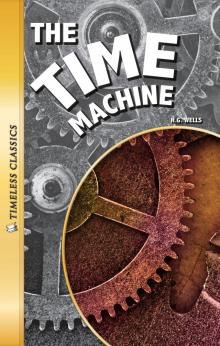 The Time Machine
The Time Machine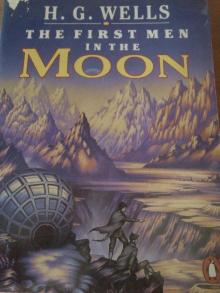 The First Men in the Moon
The First Men in the Moon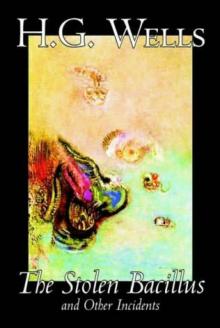 The Stolen Bacillus and Other Incidents
The Stolen Bacillus and Other Incidents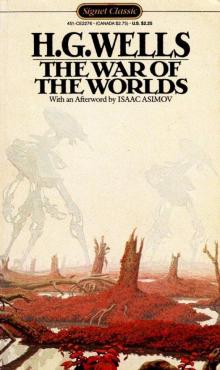 The War of the Worlds
The War of the Worlds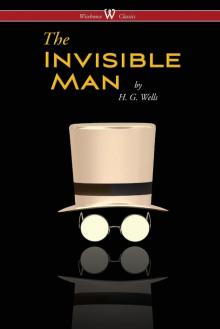 The Invisible Man: A Grotesque Romance
The Invisible Man: A Grotesque Romance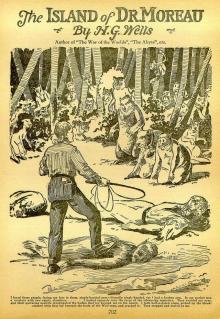 The Island of Doctor Moreau
The Island of Doctor Moreau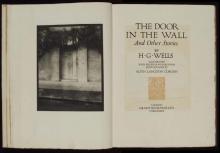 The Door in the Wall, and Other Stories
The Door in the Wall, and Other Stories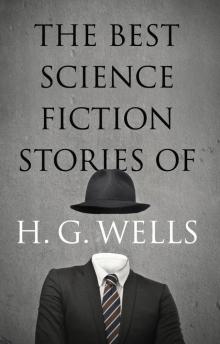 The Best Science Fiction Stories of H G Wells
The Best Science Fiction Stories of H G Wells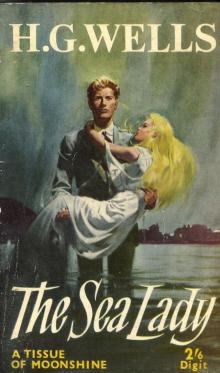 The Sea Lady
The Sea Lady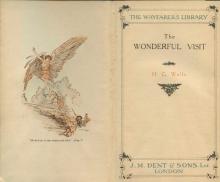 The Wonderful Visit
The Wonderful Visit Love and Mr. Lewisham
Love and Mr. Lewisham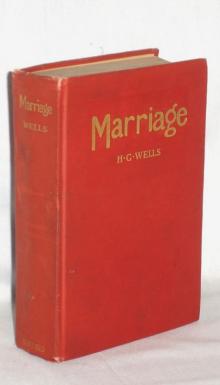 Marriage
Marriage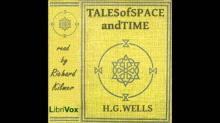 Tales of Space and Time
Tales of Space and Time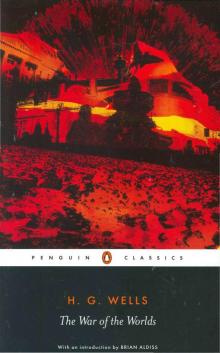 The War of the Worlds (Penguin Classics)
The War of the Worlds (Penguin Classics) Twelve Stories and a Dream
Twelve Stories and a Dream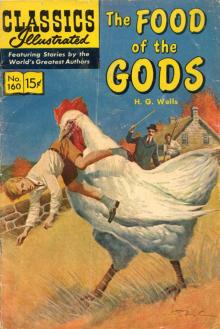 The Food of the Gods and How It Came to Earth
The Food of the Gods and How It Came to Earth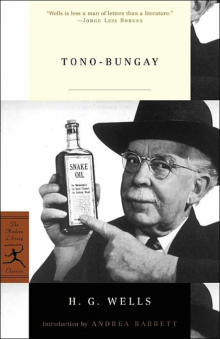 Tono-Bungay
Tono-Bungay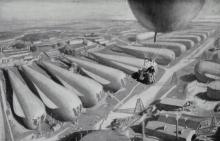 The War in the Air
The War in the Air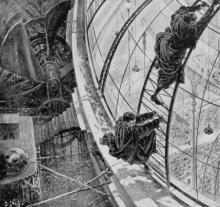 The Sleeper Awakes
The Sleeper Awakes The Country of the Blind and Other Stories
The Country of the Blind and Other Stories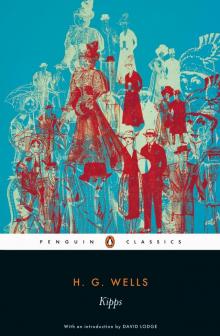 Kipps
Kipps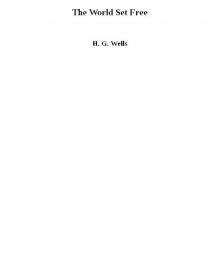 The World Set Free
The World Set Free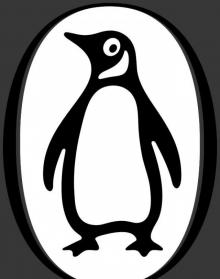 The Country of the Blind and other Selected Stories
The Country of the Blind and other Selected Stories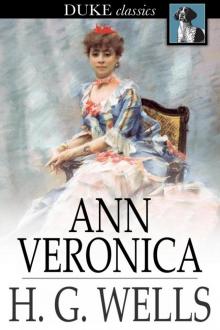 Ann Veronica
Ann Veronica Ann Veronica a Modern Love Story
Ann Veronica a Modern Love Story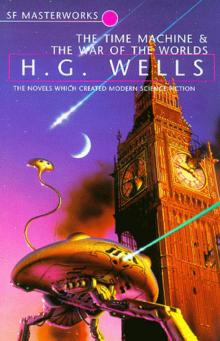 The Time Machine and The War of the Worlds
The Time Machine and The War of the Worlds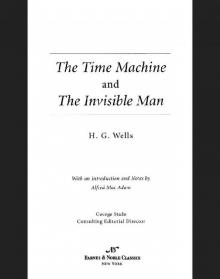 Time Machine and The Invisible Man (Barnes & Noble Classics Series)
Time Machine and The Invisible Man (Barnes & Noble Classics Series)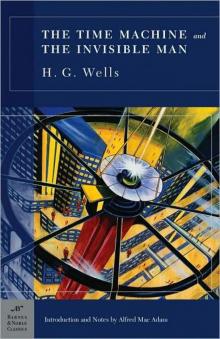 The Time Machine and The Invisible Man
The Time Machine and The Invisible Man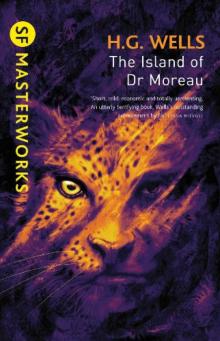 The Island of Dr. Moreau
The Island of Dr. Moreau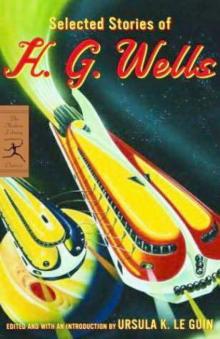 Selected Stories of H. G. Wells
Selected Stories of H. G. Wells Island of Dr. Moreau
Island of Dr. Moreau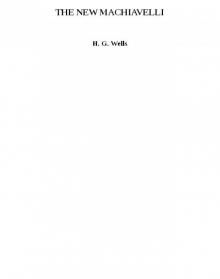 THE NEW MACHIAVELLI
THE NEW MACHIAVELLI